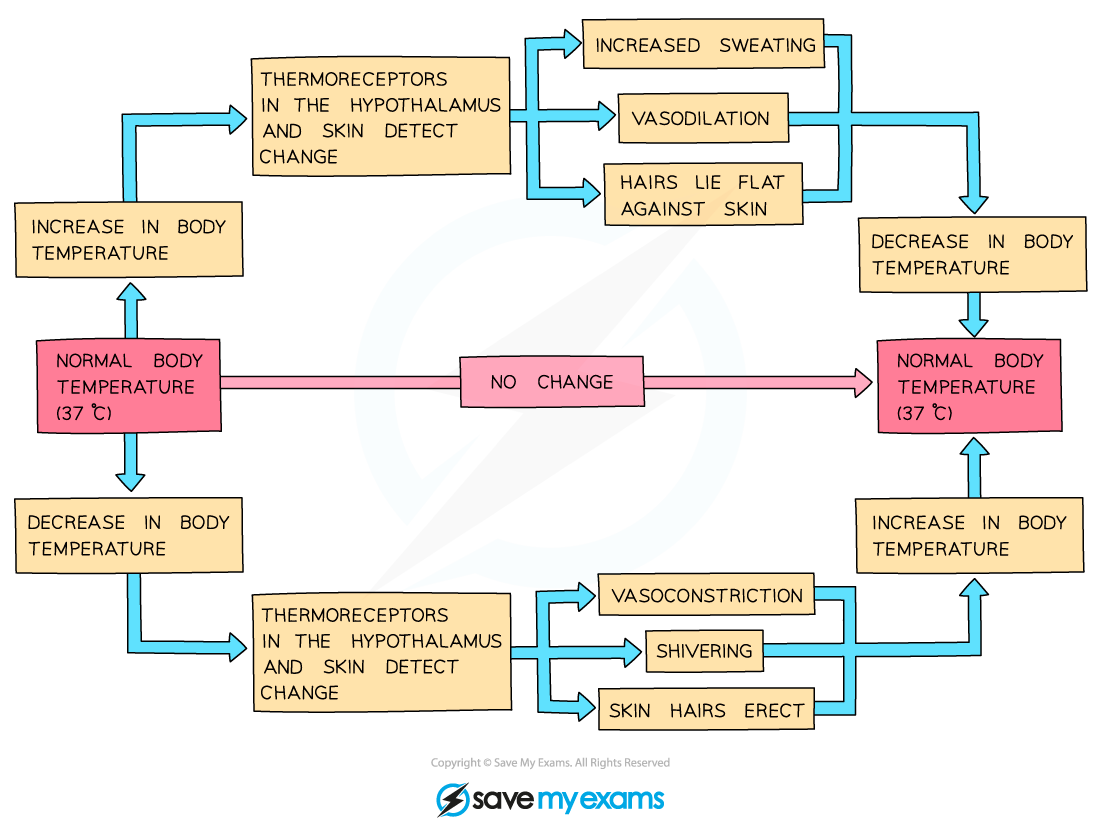Control of Body Temperature (AQA GCSE Biology): Revision Note
Exam code: 8461
Did this video help you?
Monitoring of Body Temperature
The human body needs to maintain a temperature at which enzymes work best, around 37°C
Processes such as respiration release energy as heat; and the body loses heat energy to its surroundings – the energy gained and lost must be regulated to maintain a constant core body temperature
Body temperature is monitored and controlled by the thermoregulatory centre in the brain
The thermoregulatory centre contains receptors sensitive to the temperature of the blood
The skin contains temperature receptors and sends nervous impulses to the thermoregulatory centre

Human skin contains structures involved in processes that can increase or reduce heat loss to the surroundings
Controlling Body Temperature
If the body temperature is too high, blood vessels dilate (vasodilation) and sweat is produced from the sweat glands
Both these mechanisms cause a transfer of energy from the skin to the environment, cooling the body down

Responses in the skin when the body temperature is too high and needs to decrease
If the body temperature is too low, blood vessels constrict (vasoconstriction), sweating stops and skeletal muscles contract (shiver)
These mechanisms reduce heat loss to the surroundings (with skeletal muscle contraction increasing heat released in the body)

Responses in the skin when body temperature is too low and needs to increase
Examples of Body Temperature Control
Higher tier only
The mechanisms described above lower or raise body temperature
In the exam, you may be given examples of different contexts in which the body temperature needs to decrease (when someone is too hot) or increase (when someone is too cold)
Learn the following concepts to ensure you can suggest what changes are happening and why:
Body temperature regulation summary table
Body temperature too high | Body temperature too low |
|
|
|
|

Remember homeostasis involves the maintenance of constant internal environment; temperature control is an example of negative feedback

Unlock more, it's free!
Did this page help you?